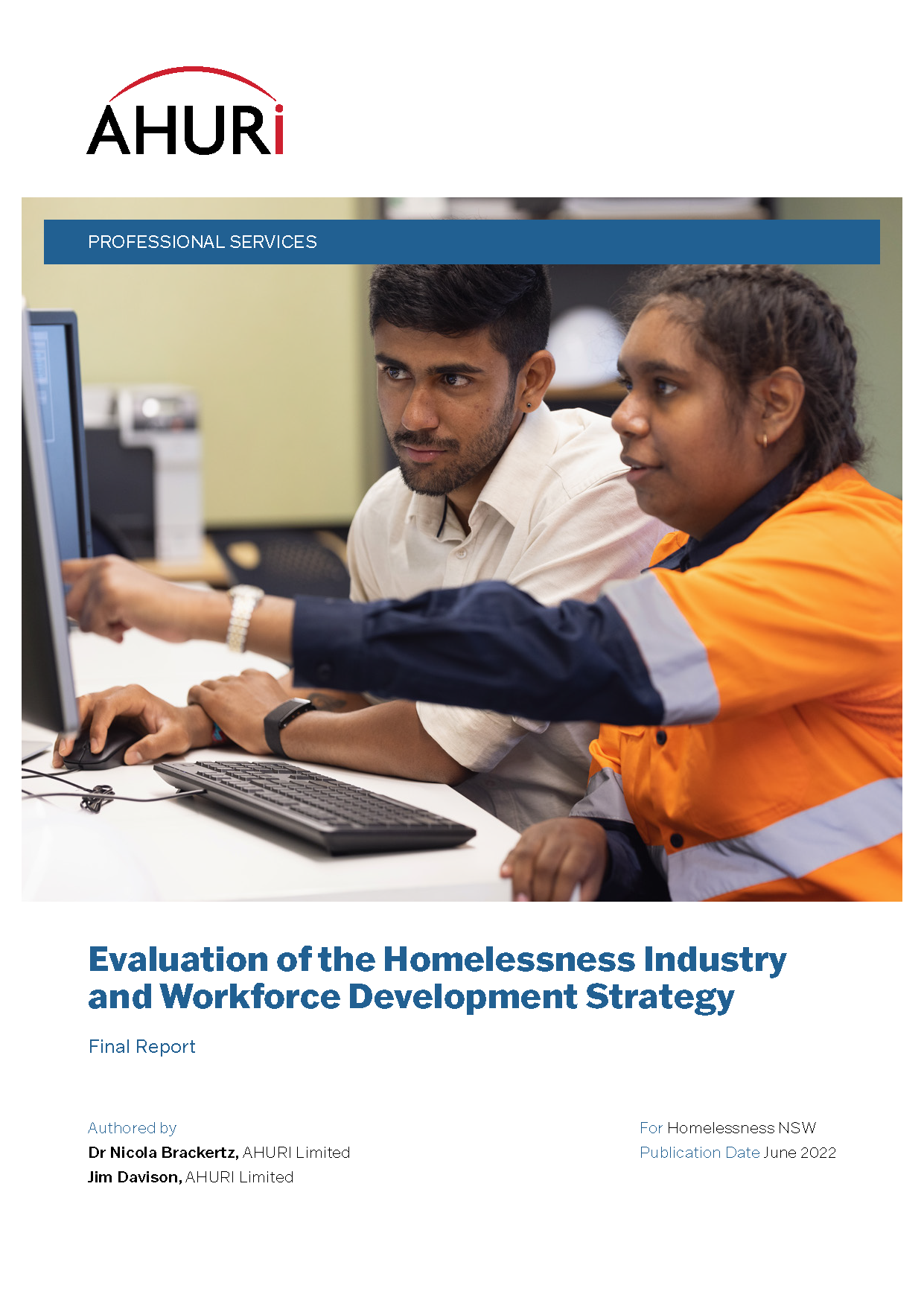
AHURI evaluates NSW Homelessness Industry and Workforce Development Strategy in NSW
12 Oct 2022
Homelessness NSW has released its evaluation of the Homelessness Industry and Workforce Development Strategy 2017-2020, undertaken by AHURI’S Professional Services team.
The evaluation has five key components: ‘Did the Strategy achieve its goals?’; ‘Did training and workforce development meet sector needs?’; ‘Are organisations across the NSW Homelessness Industry sustainable?’; ‘What needs to happen in the next Strategy?’; and ‘How competent are services in serving Aboriginal clients and communities?’
Overall, the evaluation found that the Strategy was implemented and delivered well, with most managers (85%) thinking it was effective or very effective in responding to sector needs. The evaluation found that all programs collaborate with other organisations in formal and informal ways, which facilitates better services and better client outcomes and allows services to support each other. The impact of COVID-19 on the sector was also widely acknowledged.
The Workforce Survey reveals that most workers are highly educated (51% hold a bachelor’s degree or higher) and that most have qualifications in either community/youth work (46%) or social policy/social work (25%); qualifications that prepare them extremely or very well (58%) or moderately well (35%) for work in the homelessness sector. Likewise, most managers felt that their staff skill levels met the needs of the program to a great extent (65%) or mostly (35%).
The Survey also highlighted the low numbers of Aboriginal workers and Aboriginal organisations in the NSW homelessness sector. Only 8 per cent of Specialist Homelessness Services (SHS) sector workers in the survey identified as Aboriginal or Torres Strait Islander, although 31 per cent of NSW SHS clients identified as Aboriginal or Torres Strait Islander.
In addition, 43 per cent of sector survey respondents answered their organisation did not provide Aboriginal specific services; 27 per cent provided Aboriginal specific services but were not contracted to do so; and a further 27 per cent were contracted to provide Aboriginal specific services.
The evaluation found that the main way programs sought to ensure Aboriginal clients were supported in culturally appropriate ways were by referring to Aboriginal specific services, by employing Aboriginal staff, and having policies in place and cultural competence training available. At the same time there is an acknowledgement that these mechanisms may not be enough.
The evaluation has made 29 recommendations across the five research questions to ensure the continued suitability and sustainability of the NSW Homelessness sector, including strategies to improve the attractiveness of the sector for new and younger workers and to develop pathways for job progression.
The evaluation report is available on the AHURI website.

